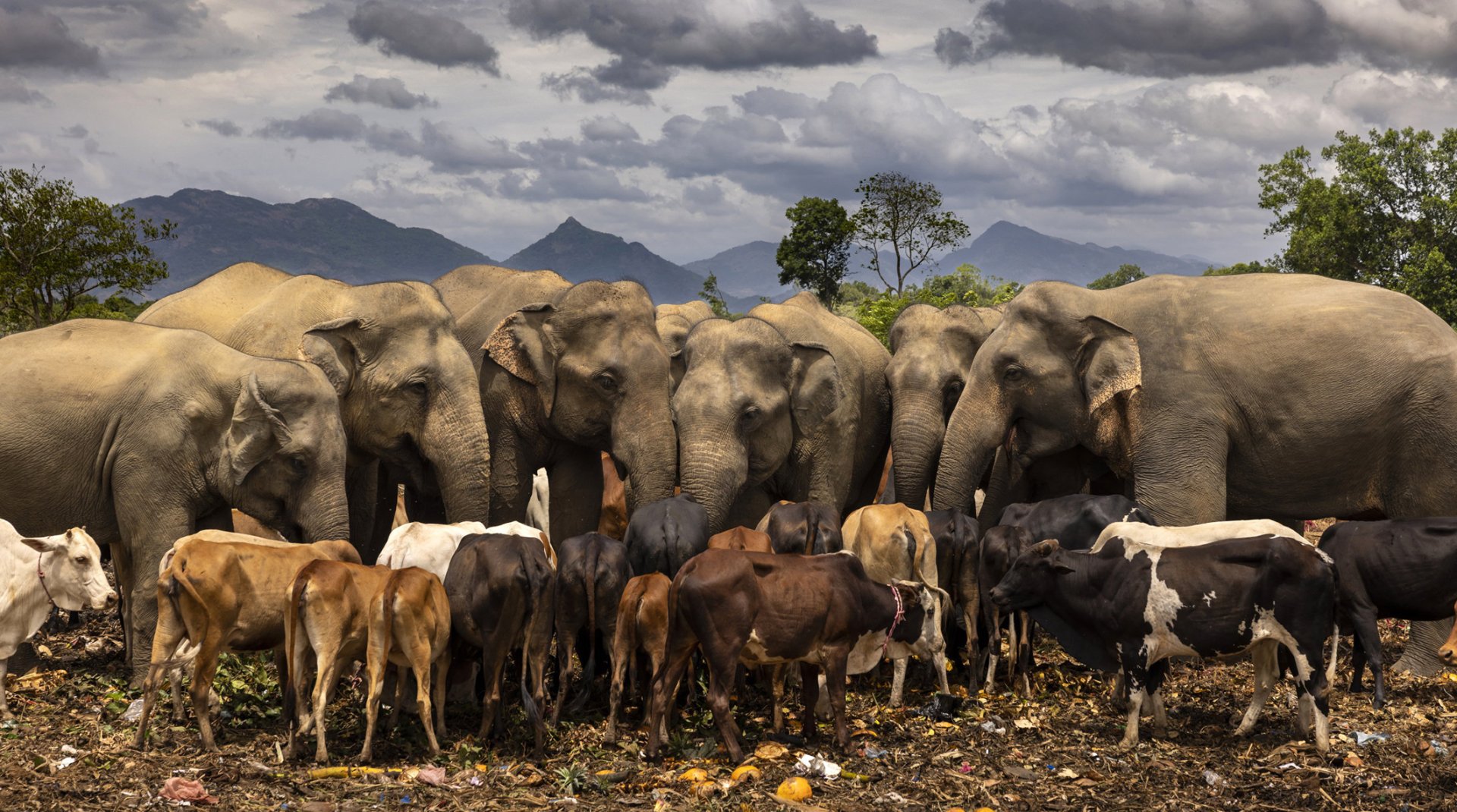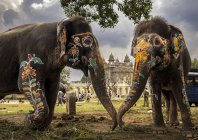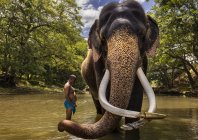
Asian Elephants – Culture, Conservation, Conflict and Coexistence.
Brent Stirton
Getty Images / National Geographic Magazine
Asian elephants today are defined through the lens of culture, conflict, economics, and troubled conservation. This photo essay is an attempt to examine the work of researchers studying Asian elephants to learn how they may successfully live with humans.
Nearly 60% of Asian elephants live outside of national parks, close to human communities, and every year more and more of their natural habitat is lost. Asia has been developing at great speed, but very little thought has been given to the question of the peaceful coexistence of humans and elephants. In countries such as Sri Lanka, there has been a tremendous focus on the agricultural sector. For example, development agencies have built dams without conducting any prior environmental impact assessments, and crops have been planted on land adjacent to elephant habitat areas. A similar pattern can be seen across Asia with development at any cost, growth for humans, and not a thought for the animals. As a result, hundreds of elephants die every year in human-elephant conflict, and many humans are maimed and killed. Yet elephants play a fundamental, centuries-old role in religious practices, plus a vital role in the tourist industry. For researchers, a greater understanding of the elephant could mitigate much of the conflict playing out today.
…
Preview


In the course of this essay, I have examined the effects of agricultural and economic development in and around traditional elephant habitats, the emergence of all-male “bachelor herds,” the effects of garbage dumps and farming close to national parks, the stress levels of female elephants before and after calving, the experience of mourning amongst elephants, survival tactics within small herds, calves learning through imitation, and the stress of elephant festivals where the animals are, ironically, deified, fettered and exploited.
I have looked at the work of researchers investigating the problem-solving skills of elephants, seeking a greater understanding of individual elephants and also of human behavior which elephants might see as a threat. I have endeavored to understand why there has been so little planning for elephants in the development of countries with the largest elephant populations and how that has affected both their habitat and their co-existence with humans. Over the past year I have observed the increase in elephants captured and in private ownership in India where the law banning trade in elephants is now being queried and debated.
Research has confirmed that elephants can have individual thinking processes. For conservationists, the issue of how well we can understand such individual thinking and how much we care will ultimately ensure a harmonious future for the currently endangered elephants of Asia.
Brent Stirton


